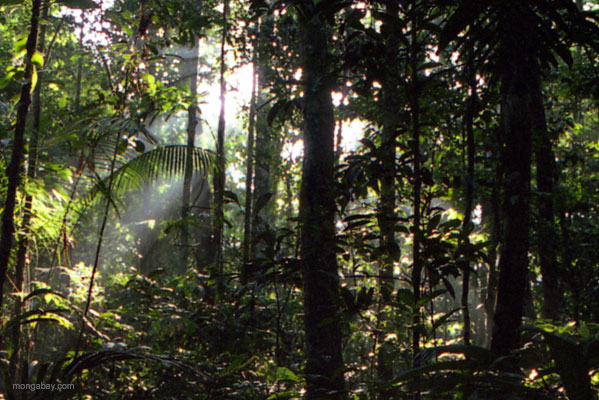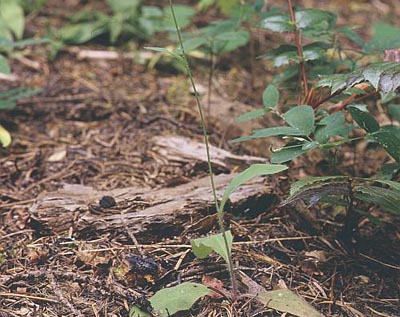




A Rainforest ecosystem is a large physical environment which is home a huge variety of wildlife. Although the flora and fauna are all subject to the same larger conditions of the rainforest, several environmental factors vary depending on which layer of the jungle they belong to. There are 4 layers to the forest, each of which is perfectly adapted to the particular set of conditions that exist in its immediate vicinity. The forest itself works as a comprehensive system; several parts that come together to form a whole.
The regions of the forest are:
The Emergent Layer
Tall trees that are over 200 feet in height form this layer.
Tall trees that are over 200 feet in height form this layer.
Conditions:
High wind speeds, plentiful sunlight
Adaptations:
Small leaves with waxy coatings to avoid water loss
Proliferation is through wind dispersal of seeds
The Canopy Layer
This layer consists of trees with a wide spread that form an umbrella over the lower parts of the forest.
Small leaves with waxy coatings to avoid water loss
Proliferation is through wind dispersal of seeds
The Canopy Layer
This layer consists of trees with a wide spread that form an umbrella over the lower parts of the forest.
Conditions:
Abundant sunlight, lots of rainfall
Abundant sunlight, lots of rainfall
Adaptations:
These trees have very dense foliage to capture maximum sunlight
Since the leaves are very dense, they hold a lot of water during rainfall, and are adapted with special ‘drip tips’ that allow water to drip out easily
These trees have very dense foliage to capture maximum sunlight
Since the leaves are very dense, they hold a lot of water during rainfall, and are adapted with special ‘drip tips’ that allow water to drip out easily
The Under canopy/Shrub Layer
This layer is formed of smaller plants and trees that exist right above the forest floor.
This layer is formed of smaller plants and trees that exist right above the forest floor.
Conditions:
Very little sun due to the shelter of the canopy layer, very little air movement or evaporation occurs here.
Very little sun due to the shelter of the canopy layer, very little air movement or evaporation occurs here.
Adaptations:
Broad leaves to capture maximum sunlight
Pollination by insects and animals
Many plants form symbiotic or parasitic relationships with larger trees
Broad leaves to capture maximum sunlight
Pollination by insects and animals
Many plants form symbiotic or parasitic relationships with larger trees
The Forest Floor
Conditions:
The floor of the forest has almost no sunlight, and very little air movement. Humidity is excessive due to the moisture trapped by upper layers.
No vegetation grows here, but it is rich and fertile ground because the conditions favour quick decomposition of fallen leaves.
The floor of the forest has almost no sunlight, and very little air movement. Humidity is excessive due to the moisture trapped by upper layers.
No vegetation grows here, but it is rich and fertile ground because the conditions favour quick decomposition of fallen leaves.
No comments:
Post a Comment